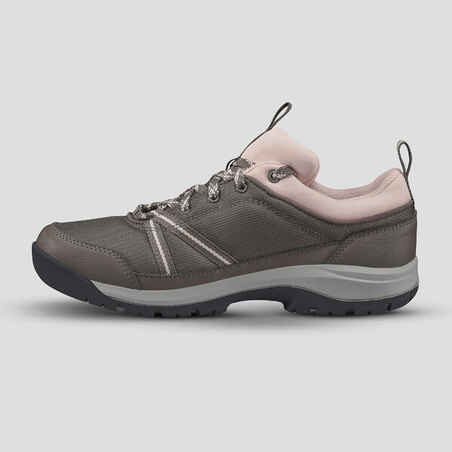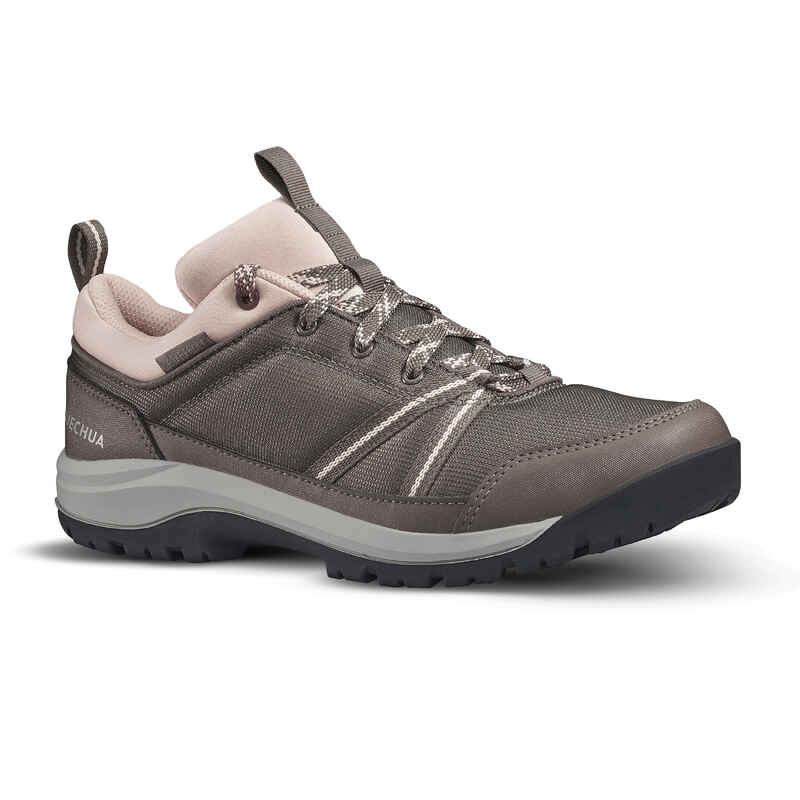Grippy soles
Designed in our laboratories, we use a special rubber formulation to optimise the grip and traction of this sole. We systematically research the best compromise to progress on muddy ground (grip) as on dry ground (traction).
Designed for hiking use
Our hiking boots are designed for use on hiking trails. Indeed, we choose the components of the sole and upper of our boots and test them to ensure that they are ideally suited to walking on loose trails (e.g. unpaved forest paths) or rocky trails (e.g. rocky coastal paths). Road use (tarmac) may lead to premature wear on your shoes and cause discomfort. They are not suitable for mountain walking.
Waterproofing tests
Laboratory- and field- tested, these shoes have a membrane to ensure optimal waterproofing and breathability. First, the shoe is immersed in water while internal air pressure is applied to check that no bubbles form on the surface of the footwear. Next, shoes are fitted to a mechanical arm that simulates walking and half immersed in water so we can test that the inside remains perfectly dry.
Measuring waterproofness
The NH150 WP shoes are waterproof for 2 hours of hiking.
They have been laboratory tested for 2,000 flexes. Once the boots have dried out, they are waterproof once again.
During the waterproofness test, we test 3 levels of waterproofness:
- 2,000 flexes, approx. 2 hours hiking
- 4,000 flexes, approx. 4 hours hiking
- 8,000 flexes, approx. 8 hours hiking
Durability tests
Laboratory tests were also conducted to test the following elements: tearing eyelets and straps, gluing, toxicology, UV resistance, abrasion resistance of outsole and upper components, accelerated ageing.
These tests allow us to improve the quality of our products and prevent premature wear of our hiking shoes.
Extend the life of your boots
We recommend you use a waterproof spray several times a year: this will help you get back the original waterproofness and fight against external stains.
Which pair of socks are suitable for Quechua NH150 waterproof boots?
These shoes are slightly breathable, but not enough to evacuate all humidity created by your perspiration. We advise you to choose Hike 100 Mid socks: they contain moisture-absorbing cotton and have a reverse terry-knit construction under the sock that wicks moisture away from your foot. They are also high enough to protect your ankle from the shoe. It is an excellent combination to reduce the chance of blisters.




























